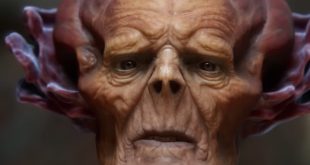Music is an important part of almost every game, but very few titles are so closely entwined with their soundtrack that it serves as an indispensible part of the gameplay.
That is not the case with Beat the Game, the upcoming adventure debut from Worm Animation, which swaps point-and-click puzzle tropes for brainteasers designed with audio composition at their core.
“Our hero is a music producer; he finds his way with making music, so mixing music helps him find his way,” explains studio founder and art director Cemre Ozkurt. “When he finds new sounds we learn more about him.
“Players need to find objects to create sounds, mix them and watch the cutscenes to understand the story and get clues about what to do next. This way music-making, discovering items and puzzle-solving combines.”
"Even if the player has no musical knowledge and plays the wrong sample, everything should sound good."
Cemre Ozkurt, Worm
Beat the Game isn’t all sound and no vision; it also boasts a highly stylised look reminiscent of art, film and games’ most unique visual artists.
“Visually we were inspired by Salvador Dali, Tim Burton, Mad Max and Journey,” explains Ozkurt. “Musically, techno and house music, as well as music-making tools like drum machines, modular and classic synthesisers and software like Native Instruments’ Maschine and Ableton Live. Game mechanic inspirations are mostly the classic adventure games like Monkey Island, Full Throttle and Neverhood.”
It’s little surprise that the game has such lofty muses when its creators’ credentials are considered. Ozkurt worked on the Oscar-nominated short film Gopher Broke and Disney movie Mickey’s Twice Upon a Christmas, as well as in-game cinematics for series including Spider-Man, Warhammer and Sonic. He’s joined by nine devs with equally impressive CVs – and ambitions.
“Worm started two years ago with a few people from the CG industry who worked at Activision Blizzard, EA, Disney and Telltale,” he recalls.
“We wanted to make games that encourages people to build stuff. Building always feels better than destroying. We want people to feel good while playing and at the same time think deeply. The idea of making creates much a better community overall and will feed us in a positive way.”
To produce an unforgettable look, Worm translated the traditional methods of its inspirations into the virtual space.
“We’ve built a desert to create an empty feeling like in Dali paintings,” details Ozkurt. “For that we had to use dynamic terrain tools so the software calculates the large terrain with less CPU overhead.”
The studio also had to scale down its visual expectations in order to suit the limitations of the hardware.
“We also wanted to create detailed textures and high quality rendering so the low frequency details of the desert can be balanced with the detailed models,” Ozkurt says.
“For that we sculpted million-polygon highly-detailed sculptures and turned them all into low-polygon models with texture projections and different level of details.”
The need to balance aspiration with realism carried over into the mechanics of the game, as Worm continued to weigh up its artistic elements against the necessitations of gameplay.
“Character navigation was our hardest challenge because we wanted to keep the classic adventure feeling and use cinematic cameras,” Ozkurt recounts. “We had to rebuild our camera system three times to fix this issue.”
Adventure games can occasionally leave players stumped with their logic: why does combining a fire extinguisher with a pencil sharpener create a bazooka?
Beat the Game takes the need for brainpower in a different direction, challenging players to combine the noise of objects to move forward. But the musically challenged shouldn’t be concerned, Ozkurt insists.
“We have a sound mixer with 24 samples and eight channels with effects,” he says. “We had to figure out how to play all these sounds synchronised.
“Even if the player has no musical knowledge and plays the wrong sample, everything should sound good. We wrote an automatic audio synch script and we layered all the sounds with bass, hi-hat, kick, tom, synth, lead and ambient, so the player can’t overlap the same type of sounds.”
From surreal art to adventure game mechanics and techno rhythms, Beat the Game’s disparate parts may seem a mismatch on paper – but much like its lead hero, it ultimately makes for a harmonious combination.

 MCV/DEVELOP News, events, research and jobs from the games industry
MCV/DEVELOP News, events, research and jobs from the games industry



